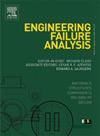通过引入高密度孪晶和位错提高线弧定向能沉积镁合金的耐磨性
IF 4.4
2区 工程技术
Q1 ENGINEERING, MECHANICAL
引用次数: 0
摘要
镁合金在传动摩擦部件等应用中的耐磨性是一个巨大的挑战。这对于通过线弧定向能沉积(WA-DED)制备的Mg组件也是至关重要的。在本研究中,利用超声冲击处理产生的变形场对每个沉积层进行处理,实现了WA-DED制造的具有高密度孪晶和位错的AZ31 Mg薄壁部件的优异耐磨性。高密度孪晶和位错的引入使其在劈裂晶粒作用下细化了组织。同时,提高了零件的硬度,降低了摩擦系数和磨损率。磨损轨迹表现出较温和的磨损特征,如磨蚀和氧化,与没有孪生和位错的部件相比,检测到无分层。其耐磨性的提高主要是由于孪晶和位错堆积引起的硬化效应和滑移过程中较高的加工硬化响应,抑制了表面变形和裂纹扩展。此外,通过引入大量孪晶边界形成的均匀氧化摩擦层也在抑制材料剥落、热软化和高滑动速度下的熔化方面发挥了重要作用。本研究为制备具有优异耐磨性的WA-DED镁合金薄壁件提供了一种新的策略。本文章由计算机程序翻译,如有差异,请以英文原文为准。

Enhancing wear resistance of wire-arc directed energy deposition Mg alloy via introducing high-density twins and dislocations
It is a huge challenge for the wear resistance of Mg alloys in applications such as transmission friction components. This is also critical for Mg components prepared by wire-arc directed energy deposition (WA-DED). In this study, a superior wear resistance in WA-DED manufactured AZ31 Mg thin-walled component with high-density twins and dislocations was achieved by employing the deformation field originating from ultrasonic impact treatment on each deposited layer. The introduction of high-density twins and dislocations refined the microstructure under their splitting grain effect. Meanwhile, the hardness of components was enhanced, resulting in lower coefficient of friction and wear rates. And worn tracks exhibited milder wear characteristics such as abrasive and oxidation, delamination-free was detected compared with components without twins and dislocations. The improved wear resistance mainly resulted from twins and dislocations pile-up inducing the hardening effect and the higher work hardening response during sliding, inhibiting surface deformation and crack propagation. Additionally, the uniform tribo-oxide layer formed by introducing numerous twin boundaries also played an important role in suppressing material spalling, thermal softening and melting at higher sliding velocities. This study provides a novel strategy for preparing WA-DED Mg alloy thin-walled components with the excellent wear resistance.
求助全文
通过发布文献求助,成功后即可免费获取论文全文。
去求助
来源期刊

Engineering Failure Analysis
工程技术-材料科学:表征与测试
CiteScore
7.70
自引率
20.00%
发文量
956
审稿时长
47 days
期刊介绍:
Engineering Failure Analysis publishes research papers describing the analysis of engineering failures and related studies.
Papers relating to the structure, properties and behaviour of engineering materials are encouraged, particularly those which also involve the detailed application of materials parameters to problems in engineering structures, components and design. In addition to the area of materials engineering, the interacting fields of mechanical, manufacturing, aeronautical, civil, chemical, corrosion and design engineering are considered relevant. Activity should be directed at analysing engineering failures and carrying out research to help reduce the incidences of failures and to extend the operating horizons of engineering materials.
Emphasis is placed on the mechanical properties of materials and their behaviour when influenced by structure, process and environment. Metallic, polymeric, ceramic and natural materials are all included and the application of these materials to real engineering situations should be emphasised. The use of a case-study based approach is also encouraged.
Engineering Failure Analysis provides essential reference material and critical feedback into the design process thereby contributing to the prevention of engineering failures in the future. All submissions will be subject to peer review from leading experts in the field.
 求助内容:
求助内容: 应助结果提醒方式:
应助结果提醒方式:


